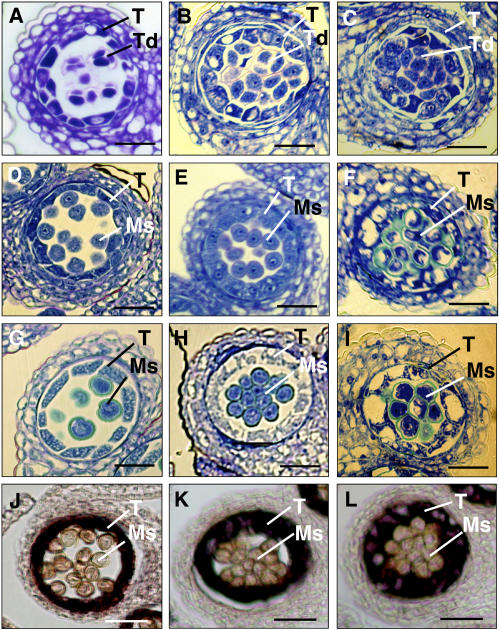Figure 4.
Overexpression of TPD1 delayed the degeneration of transgenic tapetal cells. A to C, Transversal sections of anthers at stage 7, showing that tetrads were formed in the wild-type (A), fertile transgenic (B), and sterile transgenic (C) anthers. D to F, The transversal sections of anthers at stage 9. D, The tapetal cells started to degenerate and microspores were separated in wild-type anther. E, The degeneration of tapetal cells was delayed and microspores were still separated in the fertile transgenic anther. F, The degeneration of tapetal cells was greatly delayed and microspores were not separated in the sterile transgenic anther. G to I, The transversal sections of anthers at stage 11. G, The tapetal cells were almost degenerated and the pollen grains were formed in wild-type anther. H, The tapetal cells were degenerated apparently more slowly in the fertile transgenic anther than in the wild-type ones. The pollen grains were formed but stacked together. I, The degeneration of tapetal cells was greatly delayed and pollen grains were not separated in the sterile transgenic anther. J to L, Overexpression of TPD1 enhanced the expression of a tapetum-specific gene, ATA7, in the transgenic tapetal cells at stage 9, showing that the ATA7 was expressed more strongly in sterile (L) and fertile (K) transgenic anthers than in wild-type anther (J). Ms, Microspores; Pg, pollen grains; T, tapetum; Td, tetrads. Bars = 20 μm.

